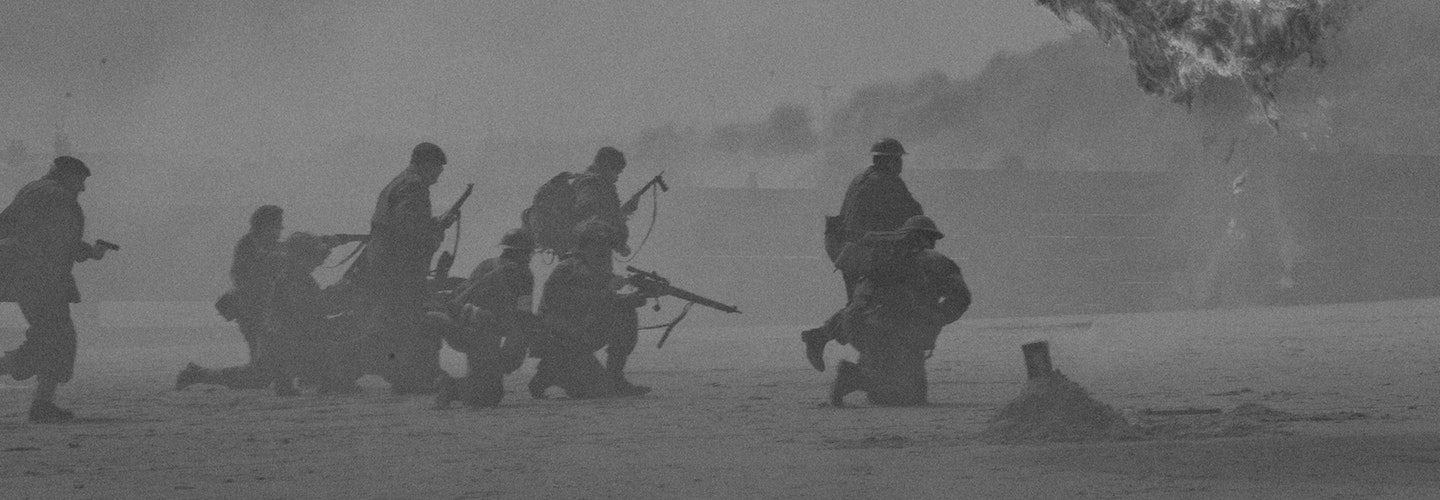The U.S., Canadian, and British allied forces invaded the Nazi-held beaches in Normandy, France, on June 6, 1944, what was 77 years ago today. The day called D-Day (the “D” simply stands for day and the term denotes the start day of a distinctive military field operation) marked the beginning of a 3-month-long strategy known as Operation Overlord, which many historians believe determined the course of World War II (1939-1945) by paving the way for allied expansion into France. Here is a poignant 9 minute film that I highly recommend watching to witness a bit of what occurred on D-Day; the short film uses real footage from that day, shown in color by artificial intelligence enhancement. The totality of Operation Overlord was an elaborate orchestration of events aimed at opening a new western front on the Atlantic that could put pressure on Nazi Germany, along with the advancing allied forces from the south and the east. Here is a 9 minute video that summarizes D-Day and Operation Overlord.
I visited the beaches of Normandy in December of 1999 and couldn’t help but imagine the events of that pivotal day, which took place on the same soil where I walked, 55 years prior. I briefly mentioned my experience in Normandy in my conversation with Jocko Willink on the podcast (around 1 hour 59 minutes). I had recently read American Historian Stephen Ambrose’s masterpiece, D Day: The Climactic Battle of World War II and had to see the landscape of the events for myself. During my trip, I visited each of the five beaches that allied troops stormed on D-Day, and from each beach, I collected well-rounded rocks and small water samples in bottles. The five beaches were codenamed in the war: Gold, Juno, Sword, Utah, and Omaha, on which there was a total of 156,000 allied troops who successfully stormed through. I spent most of my time at Omaha Beach, where U.S. forces faced heavy resistance that resulted in over 2,000 American casualties, and at the cemetery above the beach. In total, D-Day witnessed at least 10,000 allied casualties and between 4,000 to 9,000 German casualties.
It is fascinating to learn about the intricate events surrounding the D-Day invasion and Operation Overlord in general. The details of the strategy that allowed the successful invasion to occur is a great example of how war is more than just fighting: the battle itself often represents the culmination of clandestine intelligence-gathering operations.
As part of Operation Overlord, the Allied forces engaged in an elaborate deception campaign called Operation Bodyguard that was designed to deceive the Germans about the date and location of the D-Day attack. Thus, the choice of location was thoughtfully counterintuitive: the Germans logically believed that the allied forces would want to optimize for the shortest route across the English Channel. This is why the Germans remained convinced that the main invasion target was Pas de Calais (the narrowest point between Britain and France which is where swimmers today attempt to swim the English Channel) rather than Normandy. (Here is a 15 minute video explaining why Normandy was selected for D-Day.) Deception was a complex strategy: the Allies used fake radio transmissions and double agents to feed misinformation to the Germans and created a “Trojan Horse” force led by George Patton, the best American general who was assumed to lead the cross-channel invasion. Because Patton was not present in Normandy, the Allied forces had the persuasive evidence needed to convince the Nazis that the June 6 invasion was just a “red herring,” and the actual attack was to come at Pas de Calais. As a result, Hitler and the German forces kept units away from the main fighting front in Normandy for seven weeks after D-Day, because they were still convinced of an upcoming, larger invasion. Meanwhile, the allied forces gained a decisive foothold on the Normandy beaches, needed for the victory in Europe that ultimately culminated on May 8, 1945 when Nazi Germany surrendered.
It was heavily overcast and raining the day I walked the beaches of Normandy and the air was shrouded in grey mist such that I couldn’t see anyone else except the friend that I was with. The white-out of mist offered me a blank canvas for my imagination, using a compilation of what I knew from Ambrose’s book, other historical accounts I had read, and all of the World War II films of that day that I had seen. From the waterline of the Omaha beach where I stood, I remember looking up at the tops of the steep cliffs—vertical walls, really—imagining what the U.S. soldiers saw. My imaginative experience was made all the more moving when I realized, mulling around on the beach, that it was December 6, 1999—exactly and amazingly 666 months to the date from the actual invasion.






Peter,
Taking nothing away from the d-day heroes, I have been considering the role of the German Russian front in the success of Overlord — and have been trying to assess my own eurocentric biases to evaluate the roles of all countries in the defeat of Hitler’s Germany.
Yes, exactly. The Russians defeated the Nazis, not the USA, British, French, etc. Russian dead? Estimates vary, but we’re talking tens of millions–including millions of civilians. The losses of the countries on the western front do not compare to Russian sacrifices. D-Day was a dramatic and tragic event, but Eisenhower et al. could’ve spared their soldiers and it would not have made much difference.
Thank you, Peter, for pointing out the importance of this day. I have served, read all the accounts but never made it to the area, much to my chagrin. One of my constant reminders hangs in my office, which is the work by John D. Shaw – Easy Company and the “Night of Nights” signed by the remaining living members of easy company. Winston Churchill summed it up perfectly “Never in the field of human conflict was so much owed by so many to so few.”
Dr. Attia, if you enjoyed Stephen Ambrose’s books on D-Day and World War II, consider a visit — in person or virtually (www.nationalww2museum.org/war/from-collection) — to a project that he began, the National World War II Museum (www.nationalww2museum.org). Since its inception the museum has proven so popular that it has expanded rapidly and currently fills several buildings. Its many exhibits feature over 9,000 audio recordings by servicemen and women, many of which Ambrose collected during his lifetime, as well as 250,000 wartime artifacts.
Thank you for speaking up for D-Day and those who served. During this pandemic, I often thought of the personal sacrifices that have been made in wars prior and how confusing it was for me that we, as a nation, chose to retreat from the Covid enemy rather than storm the enemy with health (eg: lower HbA1c, lower BMI, better diet, exercise more). I think that our recent challenge could have resulted in a healthier nation rather than a weaker one. Your highlight of the deception that led to the success of the allied forces is also interesting. I wonder how much of that tactic was utilized during the past 1.5 years and if so, who was misled and in which direction?
I was born on that day. But the Russians won the war, and have suffered the likes of Gen. Curtis Lemay since. Our oligarchy is very close to fascism.